The ceremonial launch of three days of harvesting will start on Friday morning at the largest Czech fish pond Rožmberk, near Třeboň in South Bohemia.
The town is the country’s most famous centre for the production of carp, which is traditionally eaten by Czechs for Christmas dinner. This volume of fish expected this year is regarded as average.
Fishing in the so-called South Bohemia sea, as the Rožmberk Pond is sometimes nicknamed, is a huge fishing and social event not only for fishermen but also for the thousands of visitors, who come here annually. This year’s pond fishing will start at 7:00 am with the first tug of the rod, on all three days.
“The year was not the best. Water scarcity will affect the size of the fish. Dehydrated areas are overgrown with reeds, and we have increased costs for the maintenance of ponds. Producers raised grain prices due to drought. All this led to an increase in the cost of growing fish,” Said Josef Malecha, Chairman of the Třebon Fishing Industry.
Fishing is followed by sorting, weighing and marinating of the fish. You can look forward to a rich, gastronomic program, including the sale of live fish.
The Czech Republic produces 20.000 tons of fish every year: carp accounts for 88% of total production.
Once caught and chosen as keepers, the fish would be kept alive until 3-4 days before Dec. 24, when they would be sold at markets and shops all over the country and beyond for Christmas festivities.
Ever since the medieval ages, carp have been the obvious choice for Christmas dinners. Christmas carp are not killed but caught alive. In December all over the country, little pools filled with carp are put up on town squares and markets. People patiently queue as temperature drop below 0° to pick their carp. Fishmongers, dramatically smeared in blood and guts, club dead and clean most fish on the spot but they never do so without asking the crucial question: dead or alive?
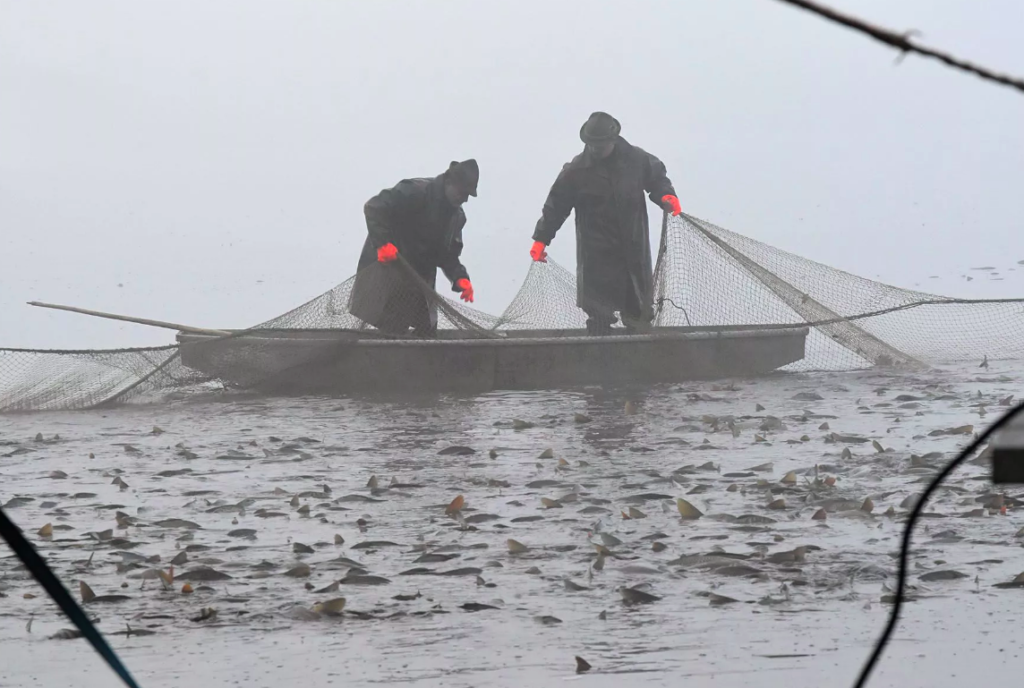
Photo: Ondřej Tomšů
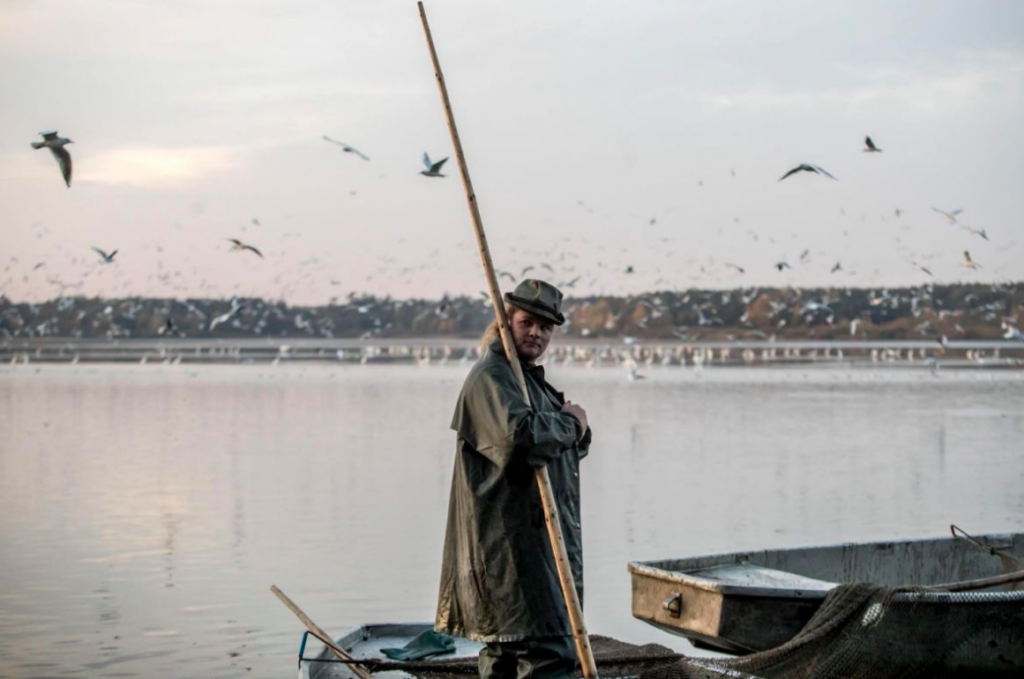
PHOTO: EPA-EFE
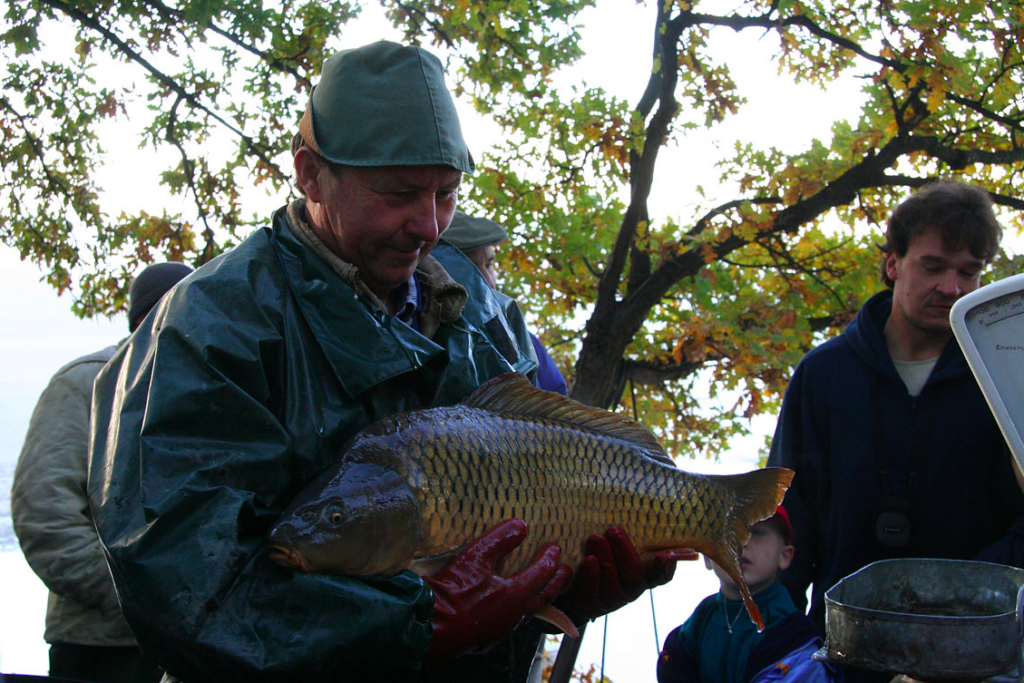
Photo: Páv Lučištník
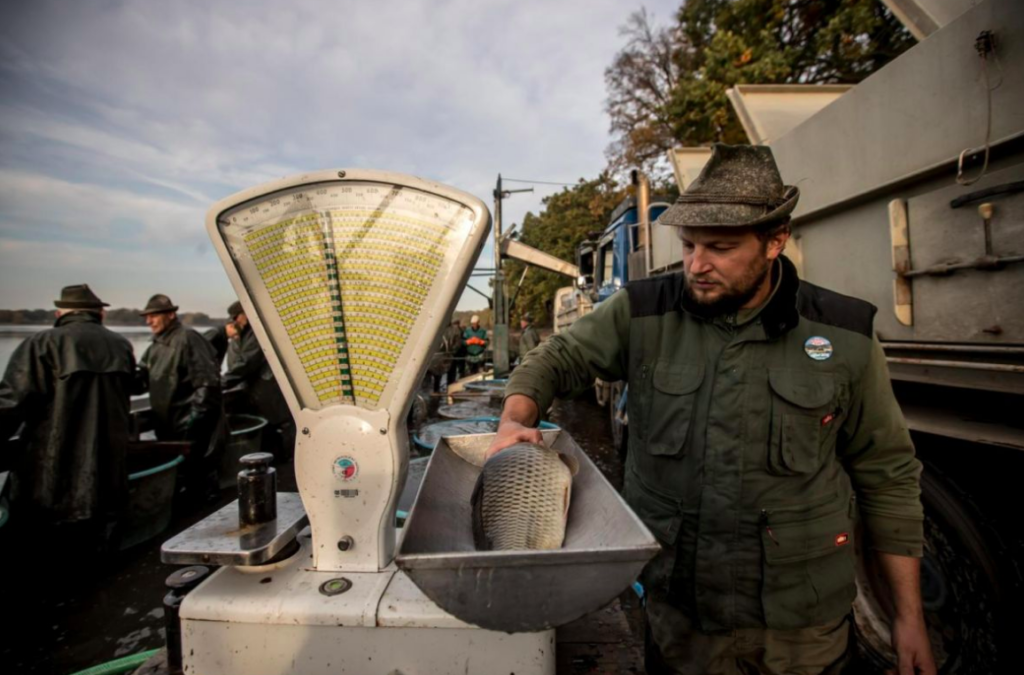
PHOTO: EPA-EFE
The director Irena Pavlásková just finished her film The Prague Orgy based on a novel of the same name by a literary legend, Philip Roth, one of the most respected writers in the world.
It is the first time in Czech film history that the Czech artist was granted rights personally from such a world-wide famous artist, winner of Pulitzer Award, Man Booker Award, and many other literary awards. It will premiere in Czech cinemas today (Thursday, October 10th)
The story
The story of The Prague Orgy brings us to mid-70s. A famous American writer Nathan Zuckerman – often used alter ego of Philip Roth himself – arrives in Prague to save a manuscript of a banned book. Thanks to searching for the manuscript he gets to know a peculiar and wild Olga and gets into renowned parties where everyone has his or her own way how to escape to short-term freedom.
Zuckerman is attracted to the eccentric woman by her mysteries and is scared by her shameless openness at the same time. Gradually, against his will, he becomes not only a spectator but also a participant of a decadent spectacle, where many people play a false game and no one can be trusted. Zuckerman’s Prague visit is full of bizarre meetings with an extraordinary group of people. It soon becomes almost an adventurous and dangerous mission. In the end, Zuckerman is not sure who is a friend who is a provocateur or an informer. Who are the people form the decadent orgies in the house of the son of a famous painter? Who is a scared student who warns him to leave Czechoslovakia immediately? Who is his guide through the normalization hell? Is he really just a fired theatre director working now as a handyman in a museum? And who is his Olga: a scandalist and a rebel or a player of a double game? Not only Zuckerman’s freedom is in danger, but maybe also his life.
„In the film, the relationship of Olga and Zuckerman is the key one,“ says the director Irena Pavlásková. „Zuckerman is attracted to Olga, but she scares him at the same time. She is so open-minded and without scruples that she embarrasses him and fascinates him at the same time.“
The cast
Nathan Zuckerman is played by Jonas Chernick. A Canadian actor, screenwriter, and producer who was part of tens of Canadian and American TV shows and films.
Olga is played by a Russian actress Ksenia Rappoport. She was born in St. Petersburg and she is a very respectable film and theatre actress who is often casted into international productions. She was nominated for the European Film Award for the lead part in the film La sconosciuta by Giuseppe Tornatore where she acted with Gérard Depardieu.
Pavel Kříž is a Rudolf Bolotka in the film. He is a fired theatre director who is now forced to work as a handyman. Bolotka is a guide for Zuckerman. He brings him to the famous orgies in Prague but he is also an ironic glossary of the society in decay, where everyone sleeps with everybody and informs on everybody as well.
Klára Issová and Jiří Havelka form a couple of Czech emigrants. Their story brings Nathan Zuckerman to Czechoslovakia. And actually it may be the actress Eva who accepted that she won’t continue acting in America but helps Zuckerman to find a new story.
The creative team
Philip Roth based the story on his own experience when he traveled to Prague in the 70s. He visited banned colleagues-writers like Kundera, Klíma, Vaculík, and others. He was also in touch with the Czechoslovak community in New York. In the 70s and 80s he was supporting the banned writers. In 1976 the communist government refused to let Philip Roth into Czechoslovakia and he returned right after the revolution in 1990. Philip Roth died when he was 85 years old on March 2018.
The movie is distributed in two versions in Czech cinemas – in English (original language) with Czech subtitles and also in the Czech-dubbed version.
It will run in English in several cinemas around Prague (Slovanský dům, Cinestar Anděl, Cinema Lucerna) and the whole Czech Republic.
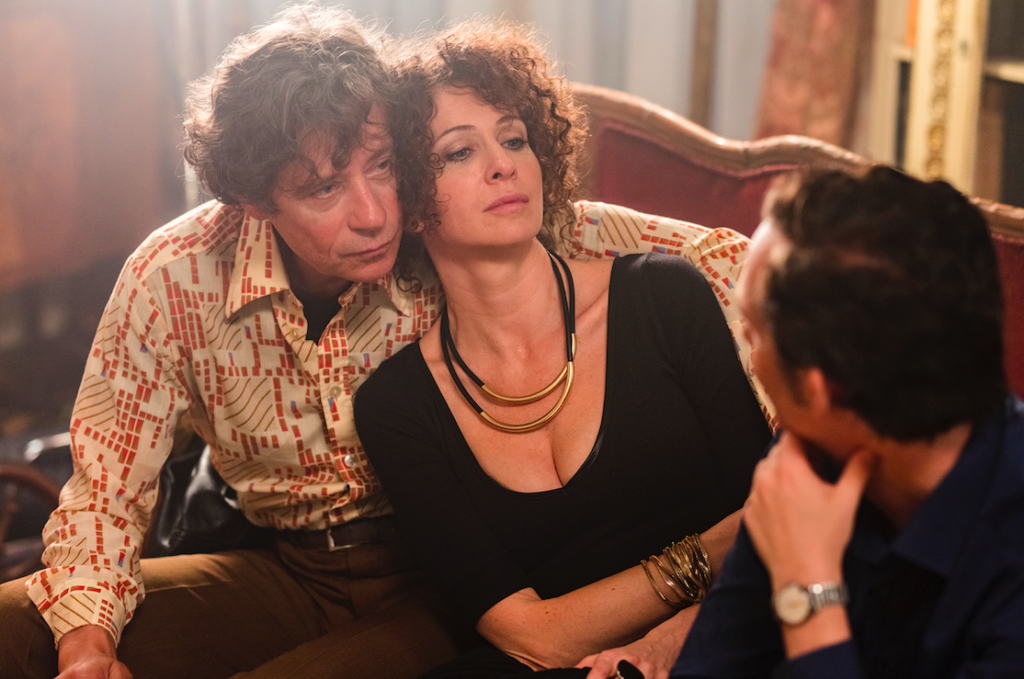
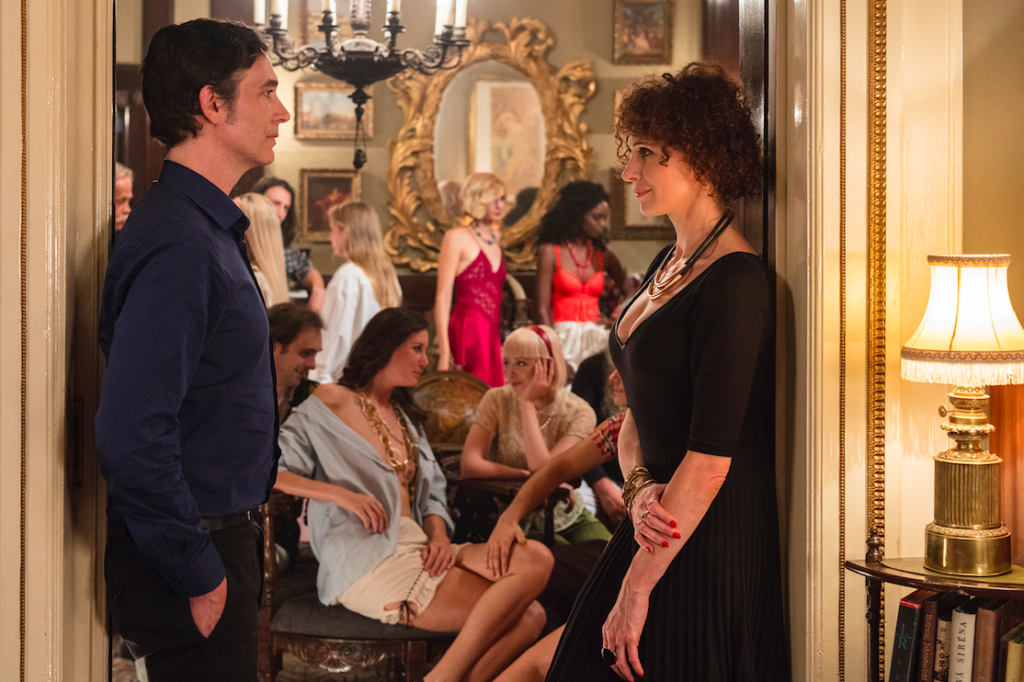
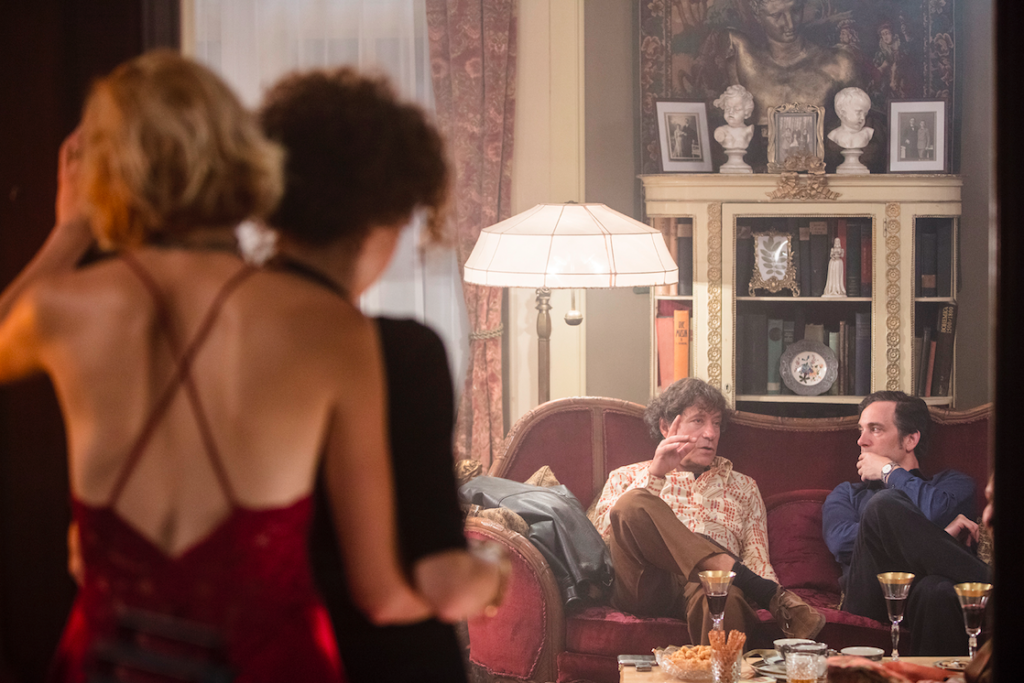
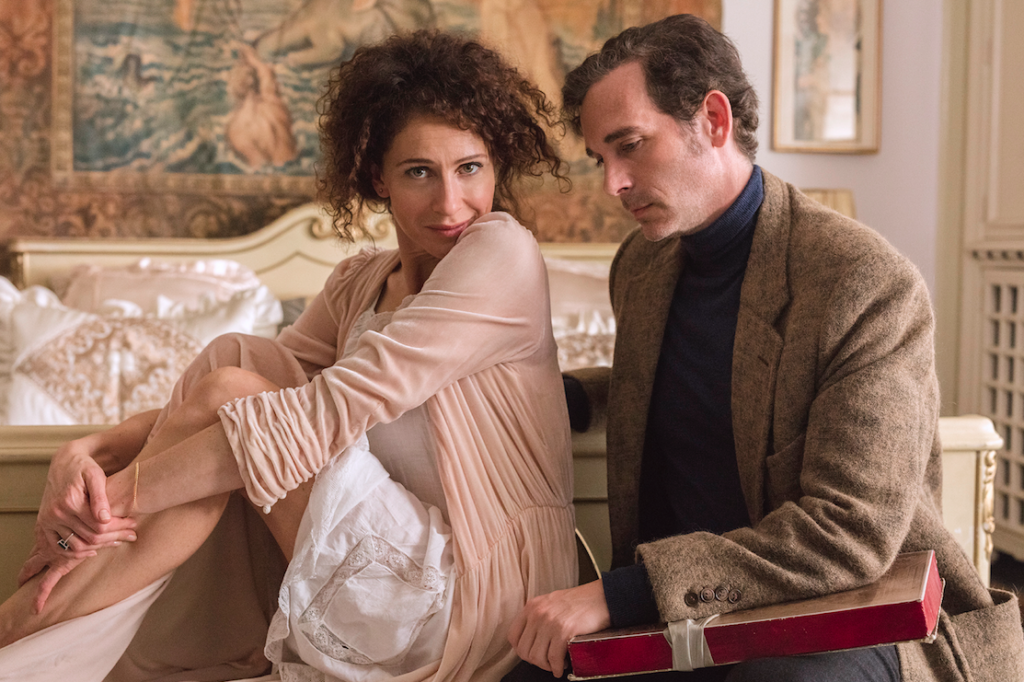
The Czech branch of the Extinction Rebellion environmental movement will block traffic and hold protest gatherings in Prague to draw attention to the climate crisis from Thursday, October 10 to Saturday, October 12, the movement informed on social media on Wednesday.
Today, members of the Czech branch of Extinction Rebellion will stand on blocks of ice with nooses around their necks at namesti Republiky.
Hundreds of young people gathered on September 20 at Prague’s Old Town Square and in many other Czech towns joining the international climate change protests launched by the Swedish activist Greta Thunberg.
Extinction Rebellion led protests around the world as thousands of people took to the streets in NYC, London, Paris, Berlin, Sydney, and 55 other cities.
The protests are part of a peaceful civil disobedience campaign calling on governments to reduce greenhouse gas emissions to net-zero by 2025 and halt a loss of biodiversity.
What is Extinction Rebellion?
Extinction Rebellion (XR for short) wants governments to declare a “climate and ecological emergency” and take immediate action to address climate change.
It describes itself as an international “non-violent civil disobedience activist movement”.
Extinction Rebellion was launched in 2018 and organizers say it now has groups willing to take action in dozens of countries.
The group uses an hourglass inside a circle as its logo, to represent time running out for many species.
Transport measurements from the 10th to the 12th of October 2019
Information about the transport changes related to the funeral ceremony, the Signal Festival and the football match Czech Republic – England.
Transport measurements during the funeral ceremony in Žofín
- Visitors to the funeral ceremony on Friday 11th October, are advised to use the Line B (yellow) with exit at Národní třída station and with a walking distance of approximately 10 minutes to Slovanský Ostrov. When leaving, use the Karlovo náměstí station.
- Line number 17 will be diverted from 5.00 to 24.00 through the Staroměstská – Národní divadlo – Národní třída – Myslíkova – Jiráskovo náměstí stops.
- On the tram, expect delays and irregularities with lines going to the National Theater (2, 9, 17, 18, 22 and 23).
- Metro services will boost on all routes between 7.00 and 24.00.
- We advise passengers using public transport on Friday to go to their destinations a little earlier and preferably to take the subway than the tram.
- Individual transport drivers are urged to avoid the area of the National Theater and the adjacent bridges.
Transport measurements during the Signal Festival 2019
- As part of the event, an evening laser projection on the Vltava River, near the National Theater building, will take place from Thursday 10th October to Sunday 13th October 2019. We recommend the visitors to take the “green line A of Prague metro” with exit at the Staroměstská station or the “yellow line B of the Prague metro” with exit at the Národní třída station.
- Trams will be excluded on the adjacent Legion Bridge on Thursday, Friday, and Saturday, from 7 pm to midnight.
- Line 22 will divert via the Staroměstská stop and line 9 via the Jiráskovo náměstí stop.
Transport measurements during the football match with England
- Visitors of the Sinobo Stadium (Arena Eden) football match on Friday 11th October, are advised to use the “green line A of the Prague metro” with the exit at Želivského or Strašnická stations, with a walking distance of approximately 10 minutes to the stadium.
- After the end of the match (at around 23:00) the tram and bus services at Slavia stop will be boosted for a short time. We recommend a short walk to both the nearest metro stations.
- We emphasize the lack of parking spaces around the stadium.
Transport measurements during the funeral ceremony at the Prague Castle Cathedral
Visitors to the funeral ceremony on Saturday 12th October 2019 are advised to take the tram lines 22 and 23 from the Malostranská metro station to Brusnice or Pohořelec.
The house where Jan Palach grew up in Všetaty officially opens today as a memorial featuring a multimedia exposition. The opening ceremony was attended by the minister of culture and Cardinal Dominik Duka.
The house was purchased in 2014 and was in poor condition due to it being uninhabited for many years. An architectural competition was held to find a plan to renovate the building, and a design was chosen in May 2016.
The National Museum got a building permit in early 2018 but had difficulty finding a contractor for the amount of money offered. One was finally chosen and work began in August 2018.
The house will contain objects from Palach’s life as well as displays to put the events of 1968 and ’69 into context. Among the items is Palach’s briefcase, which was found on the spot where he set himself on fire, and a letter found within it.

Source: National Museum
January 16, 1968
Jan Palach had seen the hope of Dubcek’s promise of a better life and it must have been hard when this hope was crushed. He and others like him were sure to protest but about what? In the case of Jan Palach, it was not to protest the Soviet invasion, it was to protest the effect on the Czech population that had become despondent and demoralized to the point where “acceptance of the new order” and “apathy” in respect to the choice of not protesting were widespread.
Jan Palach then decides to do something which eventually will turn him into a national icon. Having walked to the top of Wenceslas Square and standing directly in front of the National Museum, he poured petrol over his clothes and set himself on fire.
After being taken to hospital he was looked after by Dr. Jaroslava Moserova (she ran for the post of Czech President in 2005) and she listened to his reasoning until Jan Palach died on January 19th, 1969.
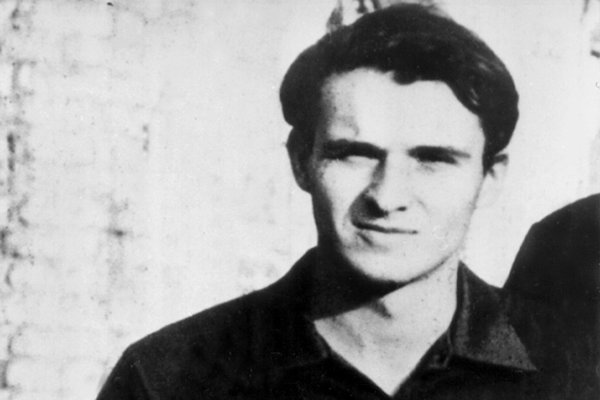
Prague is a very well-known tourist place that provides travellers tourists with a variety of choices when it comes to restaurants and eateries. From different ethnic cuisines to even American fast foods—KFC and McDonald’s are popular here—people from all over who come to visit Prague can still feel close to home when it comes to eating at a restaurant.
Adding itself to this list of ethnic cultural cuisine is the Australian family-pub that has been making a name for itself for three months now: The Down Under.
Bringing some of Australia to the city life, Ashley McGlynn—the Down Under founder—fell in love with hospitality at the age of 14, when he started working for his godfather at a restaurant back in Sydney. Although he held down odd jobs in his early years in Prague (i.e. English teaching, journalist, tour-guiding), Ashley never lost touch with his first love.

Photo: Mike von Köppe
Ashley describes Australia as being a “mixed-bred” nation. “The bulk of the country is built on people who immigrated, who were running from something, escaping from or for something, or looking for something new,” he said. “You have Greek-Australians, Italian-Australians, Asian-Australians…[so many different mixed ethnicities]. That’s what Australia is.” This description of Australia, along with his own multiethnic background (Scottish, Hungarian, Irish, Austrian, English, Norwegian), allows Ashley to create Australian-styled meals but also include influences from other parts of the world. For instance, the dim sim dish is inspired by Asian cuisine dim sum. Moreover, the restaurant also includes a vegan and kid’s menu for those with dietary or age restrictions.
The Sydney-born restaurant owner travelled to Prague for the first time at 20 years old, when he was backpacking around Europe for about a year after completing his studies back home. Ashley fell in love with the Czech Republic’s capital.
“There was just something about Prague that really— I just felt comfortable [here]. It felt safe…still had that area of [post]communism, that gray blanket hanging over, which made Prague more authentic in 1998, to me,” Ashley said. He stayed in Prague for about a month before returning back to Australia.
It would be another 15 years before Ashley returned to Prague and permanently reside there. He met his wife, who is Czech, back in 2002 at a bar in Sydney, a moment that was “divine intervention.” They married four years later in the Czech Republic, returned to Australia for a little while, then finally decided to settle in Prague in 2013. Around this time in November, Ashley opened up The Pie Shop.
The pie shop story is quite a humorous one. After being out late and drunk one night with his father, they both were left craving pie (eating pie after getting drunk is common in Australia). However, they realized there was not any pie shops in Prague. This led Ashley to the idea of creating and opening up one here himself. And so it was, the Aussie Pie Shop was born and has been flourishing steadily ever since.

Photo: Mike von Köppe
“Were very proud of what we created. It has gained and almost like following, especially in pubs…people telling others about our pies. It’s fantastic!”
Ashley explained further, the new home of the Pie Shop, The Down Under, was not as glamourous when he first saw it. “There had been no tenant for months, it smelt and was very dark.” However, it didn’t stop him and his partner from seeing what they could create, with a lot of confidence taken from the Pie Shop’s success.
The Pie Shop’s pie is more British in style, due to its delicious shortcrust pastry, and it buttery and delectable, unlike normal Australian pies that are made from puff pastry. In addition, the British market here in Prague is larger than Australian, nonetheless, the pies are still made in Australian style.
The Aussie Pie Shop may still be a small business but as Ashley stated himself, he is “hoping to expand it with bigger business ideas. There’s a different kind of energy here…[and] I want the pies to have a bigger, better home here, too.” In general, Ashley has been expanding his own business ideas, and the recent move to the bigger family-friendly venue of The Down Under works with the plan.
In this larger home, Ashley is trying to merge his bigger business plans and other things together into one restaurant or venue. The Down under also includes and super comfortable sports bar area, as Ashley is a bit sports-crazy himself, with the desire to create a new and unique sports bar atmosphere.
But the Down Under is more than just a home of pies and sports; it’s home for the whole family. This is why Ashley describes it as a family venue. With good food and sports to boot, the last piece in the family gigsaw is the massive kids corner, catering for mums and kids alike.
“I don’t want people to just come in and go. I want them to stay for three hours. Stay for coffee, breakfast, a few beers, eat in, etc. We’re not a hi-and-bye business. We’re a pub with good food, sports, and kids corner. I want people to be comfortable here. I don’t want bucks parties or groups of party people here. Although there’s great money in them, I believe I will do much better with this business,” Ashley stated.

Photo: Wolt

Photo: Mike von Köppe
Prague ranks #3 among the 50 most cultured cities in Europe and number one in Central Europe, in a list researched and compiled by Wanderu, a travel search platform, and fare aggregator.
Using a specific methodology, the Boston, Massachusetts-based Wanderu calculated the density of culturally important sites across European cities to determine the “most cultured” ones in Europe. The platform said its research looked at every city in Europe with a population of more than 300,000 and it built its rankings based on the total number of cultural landmarks such as museums, universities, historic sites, theatres and churches and cathedrals per capita.
Prague ranks 1st also as a city with the most theaters per capita (1 for every 12,957 people), followed by Paris, and Lyon.
Their sample size consisted of every city in Europe with a population of more than 300,000 and they built our rankings based on:
- the number of universities per capita,
- the number of museums per capita,
- the number of churches and cathedrals per capita,
- the number of historic sites per capita,
- and the number of theaters per capita.

Source: wanderu

Source: wanderu
Have you ever been to the theatre for a 3D musical? “Alice in Wonderland” is a family musical inspired by Lewis Carroll’s fairytale with the use of 3D technology glasses.
Already played in Germany, Russia, Austria, and Switzerland, this performance has now finally arrived in the Czech Republic. The show takes place in Prague, at Divadlo pod Palmovkou, from the 18th to the 20th of October. Through 1 hour and 20 minutes, 14 actors bring the audience to a breathtaking world, making Wonderland a tangible reality thanks to 3D technologies.
This 3D musical of the timeless classic takes you down the rabbit hole to a land of adventures where nothing is as it seems. Innovative technologies, virtual decoration sets, special effects, and unique 3D glasses, immerse the spectators in a world of dreams and fantasies.
The story tells us about a present-day Alice, who dreams about succeeding and moves to a fantasy world inhabited by fascinating creatures, experiencing interesting situations. Full of suspense and adventures, the performance shows Alice’s journey into the world of show business. On the path to succeeding and becoming a ‘start’, she will learn and realize that social life and fame will not replace genuine friendship and love.
You will be fascinated by the fabulous atmosphere and plot, and captivated by the subtle ironic parody of the modern scene. All your favourite characters from the beloved books make this a magical experience for the whole family, as it is a universal tale that reaches out to everyone.
Even in a modern world, where reality and fiction coexist, there is room for true wonders, love, hope, and dream. Follow the White Rabbit down the rabbit hole for an enchanting Alice in Wonderland performance.
For more information, click here
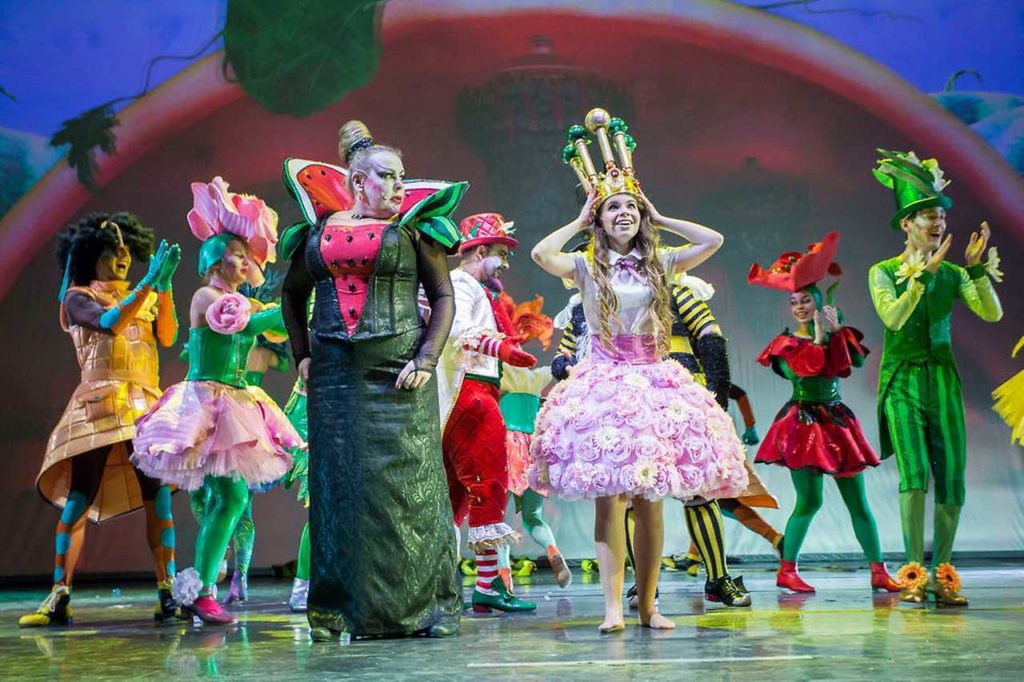
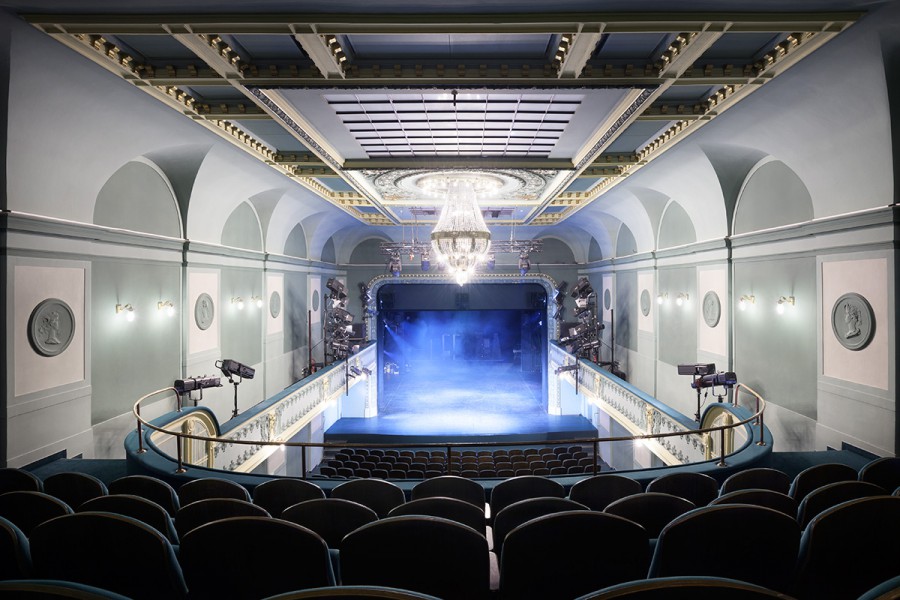
The Slav Epic cycle of paintings by Czech Art-Nouveau artist Alfons Mucha will be exhibited at Moravsky Krumlov chateau in southern Moravia for at least five years until Prague will have a suitable venue for the monumental works of art, the Prague City Council decided on Monday.
The city of Moravský Krumlov, which was in charge of the cycle of 20 outsize paintings from the 1950s to 2010, has said it can ready them for a public exhibition within a matter of months.
Prague has long claimed ownership and took possession of the paintings after a protracted decade-long dispute. Moravský Krumlov says that if the town had not hidden and protected the paintings after World War II, they would have been destroyed.
“The Slavic Epic is one of the cultural symbols of this country. Quarreling and disputing over them is a shame and nonsense. That is why we have started to work with all sides and I hope we will come to a rational solution soon,” City Councilor Hana Třeštíková (Praha Sobě) said.
The entire epic was last shown in Prague from 2012 to the end of 2016 at the National Gallery’s modern art venue at Veletržní palác.
The Slav Epic (Slovanská epopej) is a series of twenty monumental canvases (the largest measuring over 6 by 8 meters) depicting the history of the Slav people and civilization. Mucha conceived it as a monument for all the Slavonic peoples and he devoted the latter half of his artistic career to the realization of this work.
The first canvas in the series, The Slavs in Their Original Homeland, was finished in 1912 and the entire series was completed in 1926 with the final canvas, The Apotheosis of the Slavs, which celebrates the triumphant victory of all the Slavs whose homelands in 1918 finally became their very own.
In 1928, Mucha and Crane officially presented the complete series of the Slav Epic to the City of Prague as a gift to the nation, coinciding with the 10th Anniversary of its independence.
Prague City Council has decided to cancel its sister-city relationship with Beijing over the latter’s unwillingness to re-negotiate wording relating to Beijing’s ”One China Policy” in the partnership agreement.
Beijing and Prague established sister-city relations only recently in 2016 under the previous mayor Adriana Krnáčová, after Xi Jinping made a visit to the city.
Prague Mayor Zdeněk Hřib has shown strong support for Taiwan and began calling for Beijing to remove the “One China” language from the agreement back in January. Hrib made a visit to Taiwan in March, and has come under fire from Beijing for his “pro-Taiwan stance.”
In Taiwan, Prague also has a sister-city relationship with Taipei. Hrib says that China has all but closed down communications on the issue, which has led the city to its current decision.
“The other side repeatedly declined our proposals to remove clause number three, ignoring our last message completely, and so no understanding has been reached about a possible revision of the text.”
In response to the news, China has already begun canceling various cultural events and tours planned between the cities, with the Prague Philharmonic’s planned tour of China an example. In addition to Beijing, Prague also maintains sister-city relations with Guangzhou and Shanghai.
Prime Minister Andrej Babiš and Foreign Minister Tomáš Petříček say that while the government respects the “One China” policy it cannot dictate anything to the democratically elected Prague leadership.
By Richard Sovitzky – Anglo American University
As the dull gloom of autumn sets in, the exhibit “French Impressionism, Masterpieces of the Odrupgaard Collection” offers a last chance to gaze back into summer with over sixty vibrant, light-filled paintings from various French artists, including Monet, Renoir, and Gauguin.
Originating in late 19th century France in opposition to the strict stylistic school of Realism, Impressionism sets out to capture the feeling of a single moment in all its vivid complexity, exploring the unique qualities light casts on a particular scene amidst all its vigorous bustle and motion seen from a particular angle or perspective, through visible brushstrokes and decisive colors, rather than focusing on realism, a common feature of the dominant art of the time.
In the collection, Camille Pissaro’s Garden corner in Eragny (1897) perhaps best exemplifies this tendency: a warm afternoon sunbathes a garden in hazy light, falling on young boys at play and on a tree whose shadow shades a woman sketching and provides contrast to a roughly painted pathway of shimmering, brown, slowly baking, iridescent dust and indistinct vegetation of lighter or darker greens, depending on their nearness to the shadow of the tree.
The most well-known Impressionists like Monet, Renoir, Degas and Post-Impressionists Gauguin, and Cezanne provide the foundation for the collection but they are complemented by many other outstanding painters from the era including Pissaro, Morisot, Sisley, and Corot combining to form a delightful, varied medley of French art not often seen in traveling exhibits.
While the selection of works from the collection in this exhibit does not showcase any iconic Impressionist works, it does present a charming selection of themes consisting of holiday seascapes, reflecting the light playing on the water at noonday or the pounding rage of the surf captured in thick, white-flecked brushstrokes; of lush French landscapes full of bright light and color and peaceful tranquility; and numerous even surprising depictions of La Femme.

Camille Corot, Souvenir of a Pond in the Limousin Region, c. 1855–1860 © Ordupgaard, Copenhagen / Photo Anders Sune Berg
The collection does not contain the usual erotic objectification of women so often portrayed in nineteenth-century art but has instead paintings of La Femme by women, like Berthe Morisot’s Young Girl on the Grass (1885), where a girl, painted in wide, curving brushstrokes, sits in youthful innocence, as bright in her red jacket and health as any of the vibrant flowers beside her.
Morisot (1841-1895) focused on female subjects in her paintings, portrayed in dignity, not a vice. As a woman, Morisot struggled to be accepted in the Parisian art world, and despite her accomplishment and success as a painter her themes were not taken seriously and often dismissed for being too womanly and insubstantial.
Another highlight of the exhibit is a room of works by Paul Gauguin (1848-1903), whose distinctive use of color sets him apart from all others. His works inspired from his stay in Tahiti, although sensuous in tone and exotic in color, are also deviant as they portray native women in innocence – their nakedness ambivalent and any lustful gaze grotesque. Gauguin’s Tahitians are on the precipice of disaster, their dream-like life endangered by the encroaching white man. His Adam and Eve (1902) captures this as Adam is painted as a European, turning away from the fruit Eve offers, as if to say that the only way to preserve this paradise is to refuse it and flee.
The exhibit is on loan from the Ordrupgaard Museum of Denmark and has been making its way throughout Europe. It was originally the private collection of Wilhelm Hansen, a prosperous Danish insurance broker, who turned to art, amassing most of the collection on display around the First World War, successfully betting that their value would soar in the aftermath of the war.
Hansen would later open his collection to weekly public viewings, and after his death, he donated it to the Danish government, so that the public might also enjoy the works he collected. Selected works from the collection can be seen until October 13 at the National Gallery in Kinsky Palace.
More information is available from the National Gallery here

Paul Cézanne, Women Bathing, c. 1895, © Ordupgaard, Copenhagen / Photo Anders Sune Berg
The 15th-century Powder Tower in Prague centre will undergo a thorough reconstruction of its coating to remove its later black finish.
The general restoration of the coating is to return the tower its original appearance, such as the brown colour of the facade, from the period of the Neo-Gothic adjustments by architect Josef Mocker in the 1880s.
The current black colour dates back to the 1960s or 1970s when it was to cover different colours of the stones from various periods, the document to be discussed by the Prague Assembly’s culture committee says.
The facade of the tower is in a disastrous state due to climate influence as well as the poor-quality repair works in the 1960s and 1970s, the document writes.
The research is mainly to divide the original Gothic stones from their later replacements in the 1880s. A laser scanning of the facade is to be carried out in the first half of this year.
The Museum of the City of Prague, which operated the sight, plans to repair the floor on first storey of the tower where a display on the Prague fortifications development is to be installed.
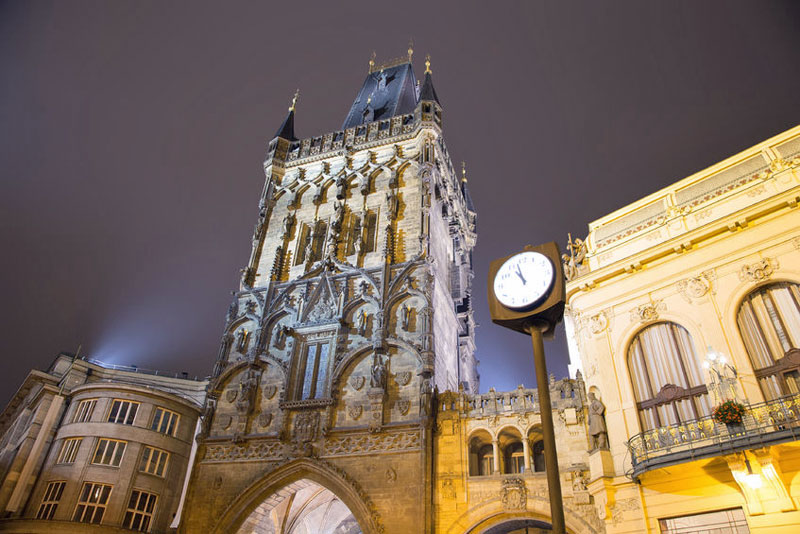
History
“Powder Gate” (“Prašná brána” in Czech), is among the most amazing and treasured sights of Prague and is considered to be one of its symbols. It marks the beginning of Celetná street, part of the “Royal Way”.
This route, leading through Prague’s historical centre and connecting the former Royal Court with Prague Castle, was a significant part of Czech kings’ coronations. Ceremonial processions took the Royal Route on their way to castle.
The history of this tower started in 1475 when King Vladislaus II of Bohemia and Hungary personally laid its cornerstone within the main fortification of the Old Town. The act was immortalized with writings on the tower’s moulding. The following words can still be found on the western side of the tower: “Behold the great building, founded with the hands of the high king Vladislaus, born of noble blood of dukes and emperors.”
The Powder Tower is basically a gate that separates Prague’s New Town from the Old Town. Back in the 11th century, it was one of the 13 gates through which Prague’s citizens could enter the Old Town.
The gate was used to store gunpowder in the 17th century and hence its name.
